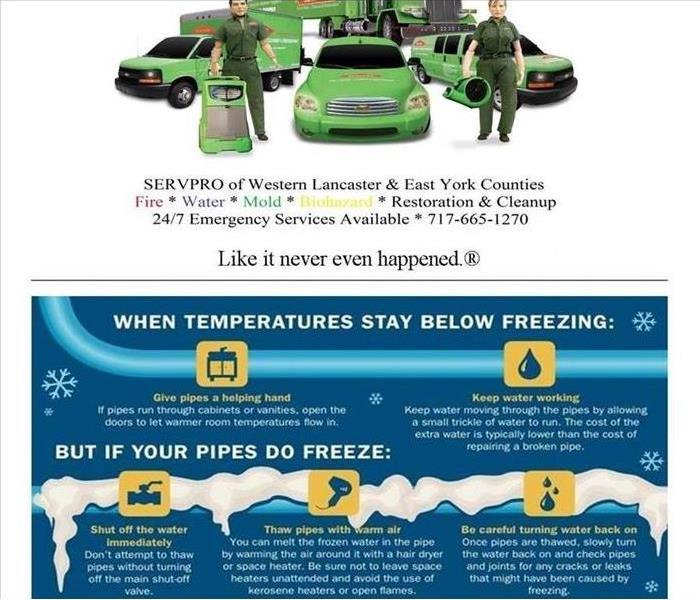Recent Storm Damage Posts
Winter Storm Preparedness, Response, and Recovery
2/17/2022 (Permalink)
 Every year, homeowners experience damage from storm-related pipes bursting, roof leaks, etc. Call SERVPRO of Western Lancaster; we're here to help!
Every year, homeowners experience damage from storm-related pipes bursting, roof leaks, etc. Call SERVPRO of Western Lancaster; we're here to help!
Two back-to-back winter storms, Uri and Viola, recently wreaked havoc across the Unites States. Southern states that are not accustomed to colder temperatures, snow, or ice were especially impacted by these storms. Uri and Viola have left extensive power outages, vehicular accidents, injuries, and even deaths. With Texas, Arkansas, Mississippi, Alabama, and a large portion of the eastern seaboard being affected, approximately 100 million people have been impacted by these two storms in one way or another.
Though these two storms have caused quite a bit of damage throughout the United States, winter storms are common, especially in eastern states, including our own: Pennsylvania. Each year, hundreds-to-thousands of Americans are injured or killed by exposure to cold temperatures, vehicle accidents on wintry roads, and fires caused by heating sources. SERVPRO of Western Lancaster wants members of our community to be safe and prepared for winter storms!
WINTER ADVISORIES, WATCHES, AND WARNINGS TO BE AWARE OF:
- Blizzard Warning- Severe winter storm conditions, reducing visibility.
- Considerable accumulation and/or blowing of snow, which reduces visibility to ¼ mile or less for 3+ hours AND
- Sustained winds, or frequent gusts of wind that are of 35+ miles per hour.
- Winter Storm Warning– A significant, and possibly life-threatening, combination of hazardous winter weather is occurring or imminent.
- 5 or more inches of snow/sleet within a 12-hour period or 7 or more inches of snow/sleet within a 24-hour period AND/OR
- Enough ice accumulation to cause damage to trees or powerlines AND/OR
- A life-threatening of snow and/or ice accumulation with wind.
- Winter Storm Watch– Potential for significant and hazardous winter weather within 48 hours. A Winter Storm Watch does not mean that significant and hazardous winter weather will occur, but only that it is possible in your area.
- Ice Storm Warning– Projected ice accumulation of ¼ or more in your area.
- Winter Weather Advisory– Any amount of freezing rain OR when 2-4 inches of snow, alone or in combination with sleet & freezing rain, is expected to cause a significant inconvenient, but is not serious enough to warrant a warning.
- Freeze Watch– Potential for significant, widespread freezing temperatures within the next 24-36 hours.
- Freeze Warning– Significant, widespread freezing temperature are present or expected.
PREPAREDNESS: WHAT TO DO BEFORE THE STORM
- Winterize your vehicle to reduce your chance of being stranded during a winter emergency.
- Stock your vehicle with: a windshield scraper with a small broom, a bag of non-clumping kitty litter (for gaining tire traction in a pinch), a book of matches in a waterproof container, a brightly colored piece of cloth (to tie to the antenna if you get stuck), a first aid kit, extra clothing/blankets, a flashlight, and jumper cables.
- Keep a home-emergency kit, including flashlights and a battery-operate radio.
- Keep an emergency non-perishable food and water supply in your home.
- Properly insulate your pipes to protect them from freezing.
- Have your home’s heating unit inspected each year to ensure that heating sources are installed properly and operating safely.
- Make sure your home is properly insulated. Install storm doors/windows or cover windows with plastic (from the inside) to provide additional insulation.
- Establish an emergency evacuation plan in case you lose power or heat.
RESPONDING: WHAT TO DO DURING THE STORM
- Stay indoors when possible, and avoid driving.
- Wear warm, layered, clothing.
- Keep your body replenished, and your energy maintained, by eating and drinking regularly.
- Stretch before going outside to avoid muscle injury. This is especially important if you plan on going out to do snow removal (shoveling, snow blowing, etc…)
- Walk carefully if going outside, always being mindful of potential ice.
RECOVERY: WHAT TO DO AFTER THE STORM
- Avoid driving or traveling until conditions have improved.
- Avoid overexertion when shoveling.
- Assess your home for any damage
- Alter your emergency response plan based on your experience.
CALL THE EXPERTS:
If you, like thousands of others each year, experience water or fire damage from a winter storm, call SERVPRO of Western Lancaster at 717-665-1270!
Storm Ready!
11/8/2021 (Permalink)
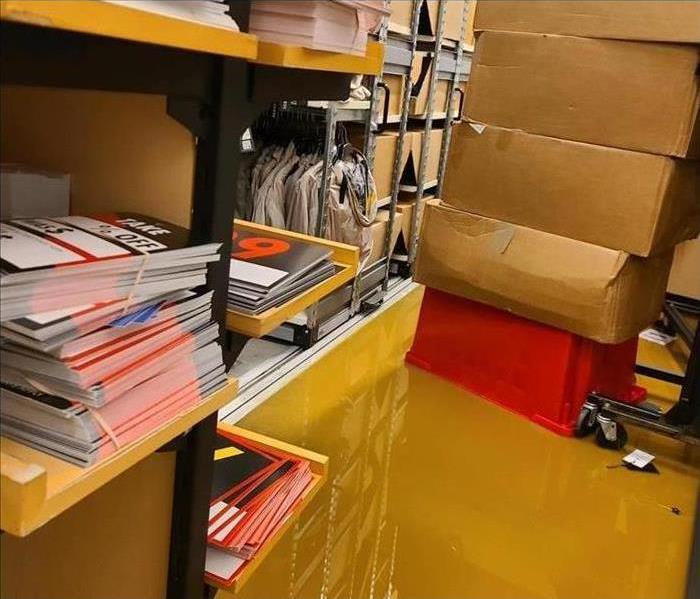 When the hillside slides into your business.
When the hillside slides into your business.
If you’ve had any water damage to your home after a storm or flooding, you have roughly 24 to 48 hours to prevent the growth of mold and mildew. It’s highly important that you start the process of drying out your water damage or you could be left with repairs to your home that are even more time consuming then they already will be.
If mold begins to grow, the process of getting your home and life back to normal must wait until all the mold is removed and your restoration company is given the OK to get started on the repairs.
Keep in mind that the process of drying out the water damage is not always straightforward and often what appears dry is not. Most moisture is often hidden in the walls and flooring, so it’s critical to identify and dry all the affected areas to prevent the growth of mold!
Can You Dry the Water Damage Yourself?
While you might think that you can dry out your water damaged areas yourself by using fans and wet-dry vacuums, we’ve found that most homeowners never fully dry out the water damaged areas. This is simply because they don’t have the proper tools to detect hidden pockets of mold-growing wet areas.
Your best bet is to hire a professional like SERVPRO of Western Lancaster to dry out your water damaged areas. These companies have specialized equipment that dries out wet areas and they both prevent and deal with mold regularly.
Does Water Damage Always Cause Mold?
If the home is not completely dry within approximately 24 hours, mold will begin to grow. It does not matter if it is summer or winter you’ll begin to get mold. It’s almost a guarantee that you will get mold in some capacity unless your water damage is extremely minimal.
Can You Kill The Mold Yourself?
While some property owners will try to dry the area or spray bleach, the truth is that these methods often only spread the mold to other areas of the home. What’s worse, AC and heating systems can spread the spores throughout the home through the air.
Avoid trying to remove the mold yourself. We understand that you can Google search “How to kill mold” and find hundreds of ways to do that, but those methods are usually for surface area mold, NOT for water damaged area mold.
Can Mold Dry Up And Die?
No. Even if there’s no moisture, the mold will stay inactive within the walls, floors, and any other area where it’s begun to grow. As soon as it gets access to any moisture, it will begin to grow again. Mold will not go away unless you deliberately have it removed.
How Do you Prevent Mold from Water Damage?
One big step that you can take to prevent mold from growing until help arrive is simply assessing and mitigating the damage as quickly as possible. Mitigating the loss is an insurance term in most policies that means you are responsible to do everything in your power to contain the damage.
Steps to Take to Prevent Mold and Further Water Damage
When you are dealing with water damage and a potential mold problem, there are a few definitive do’s and don’ts to implement as you’re waiting for help to arrive.
- Turn the water off in your home, especially if your water damage is coming from a source within your home.
- Be sure to turn off all Air Conditioning units and heating systems. You should keep your home at a moderate temperature if possible, but avoid use of the central HVAC system. Excess coolness or heat can complicate the drying process.
- Turn off any fans in the house, whether they’re ceiling fans, box fans, or free standing ones. Using your fans to dry out water can often spread any mold spores throughout the house.
- Pick up any personal items from the floor that would add to your loss.
- Try to either move furniture out of the wet area or lift it up and put something under the legs such as a block of wood that will keep it out of the water.
Leave everything the way it is and don’t start throwing away ruined possessions until after someone has looked at the damage. Often professional cleaners can save possessions that otherwise might be unsalvageable. If possible, take photos to document all your damage.
Here’s How to Get Professional Help to Prevent Mold Growth
As a homeowner who’s ready to get back to your normal life as quickly as possible, the easiest way to do this is give us a call at
1-717-665-1270. Your phone call with be answered 24 hours a day, 7 days a week by a live person on the other end of the line.
Our IICRC certified technicians will bring in specialized equipment, make sure your area is clean and dried properly, and can even help you repair damages inflicted such as replacing drywall and minor or large structural repairs.
Prevent mold and further damage by getting help as soon as disaster strikes!
WE'RE HERE TO HELP by David Brossman
10/25/2021 (Permalink)
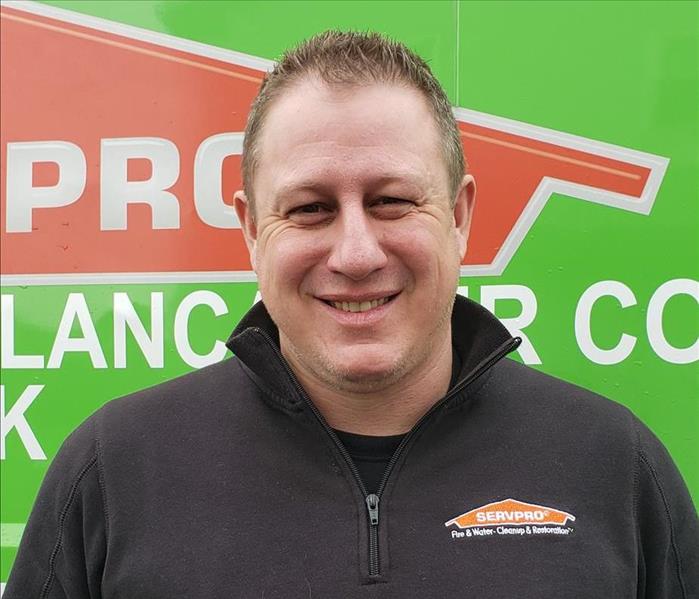 We're always here and happy to help!
We're always here and happy to help!
When things get wet, dampness stays, and MOLD starts to grow.
When the fire company visits, it's not a social call; the SOOT and grime are black on every wall.
When you come home from work, open the door, and find the water flowing across the floor.
One look around, you think, "all is lost."
You worry that replacing it will come at a cost.
You need help from someone in the know, so call David Brossman at your local SERVPRO!
With five trucks, twenty employees, and equipment galore, they will dry it, clean it, and do all to restore!
If asbestos is found, they will take care of that, too!
Making things right is what they do!
The walls will be clean, the mold will disappear, your home will be dry, and it will be, “Like it never even happened!”
~ David Brossman, Business Development Manager
Storm Precautions
8/3/2021 (Permalink)
 This is an example of water damage from heavy rains that was caused by an issue in the customer's structure that was not previously taken care of.
This is an example of water damage from heavy rains that was caused by an issue in the customer's structure that was not previously taken care of.
Storms are not just a seasonal occurrence, they can take place at anytime and can at times be very unpredictable. Precautionary measures can help limit the amount of storm damages to your home or business.
Precautionary measures:
- Be aware of your communities severe weather warnings to better be able to prepare yourself and your home or business.
- Avoid using electric appliances.
- Always follow warnings about flooded roadways.
- Avoid activities that involve using water, such as, showering, bathing, and washing dishes if possible. During a storm, lightening can travel through plumbing systems.
- Keep up with the structure of your home or business to avoid excessive water or wind damage from a storm.
It is better to prevent as much damage as possible.
SERVPRO professionals of Western Lancaster are trained and certified in an assortment of services that help people recover and restore any property damage.
Call us anytime with our 24/7 service provider at (717)-665-1270
Restoring your storm damage
7/22/2021 (Permalink)
 An example of a leaking roof caused by storm damage that our SERVPRO employees were called on to restore.
An example of a leaking roof caused by storm damage that our SERVPRO employees were called on to restore.
Natural disasters have been on the rise lately due to an increase in human activity that has promoted climate change. Storm damage is the number one result of these natural disasters, such as, hurricanes, tornadoes, and even heavy rains and flooding. We understand that these disasters can catch you off guard and be an immense inconvenience, which is why our team at SERVPRO of West Lancaster are ready to get you through this experience at any time.
Structural damage after these disasters can lead to more problems in your home or business if not treated right away. Our professionals at SERVPRO of West Lancaster are trained in all aspects and are able to restore any roof and structural damages, fix any leaks, and extract any water to limit damages and loss to your home or business.
We're here to help 24/7 with our emergency service provider! Contact us anytime at (717)-665-1270
Don't let a storm get the best of you.
7/13/2021 (Permalink)
 SERVPRO employee repairing damage on a customer's roof caused by a storm.
SERVPRO employee repairing damage on a customer's roof caused by a storm.
No matter how properly built a home or business is, storms and inclement weather can cause substantial wear and tear on a structure overtime. There is never a convenient time for hurricanes, tornadoes, heavy rains, and snow storms to occur, so it is extremely important that you are prepared and know how to handle these situations when they arise.
Storm Preparedness:
- Get inside a safe location until the storm passes.
- Secure any outdoor objects or furniture that you believe may blow away or cause damage.
- Shut windows and secure doors.
- Unplug electronics and equipment if you expect flooding to occur.
- Store important documents and/or valuables in a dry, weather resistant location.
- Call SERVPRO of Western Lancaster to assist you with repairing any damage the storm may have caused to your home or business. Like it never even happened.
Storm damage you can expect:
- Flooding from heavy rains or run-off
- Wind damage
- Water damage
Storms and natural disasters can happen at any time of the day which is why we are proud to say that SERVPRO of Western Lancaster has trained professionals that offer 24 hour emergency services 7 days a week and can help you with any sized disaster. Call today at (717)-665-1270
We're Ready to Help After the Storm
4/22/2020 (Permalink)
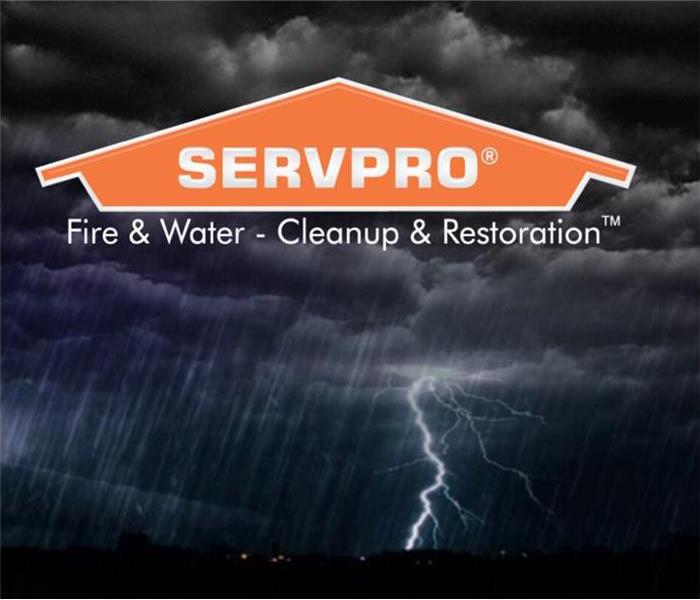 SERVPRO of Western Lancaster is "Ready to Help" after the storm!
SERVPRO of Western Lancaster is "Ready to Help" after the storm!
Approximately 98% of all National, presidential-declared disasters are weather-related, leading to approximately 650 deaths and nearly $15 billion in damage each year. Severe weather can occur at any time, anywhere. On average, Americans cope with severe weather in the following capacity each year:
- 10,000 Severe Thunderstorms
- 5,000 Floods or Flash Floods
- 1,300 Tornadoes
- 2 Land-falling Hurricanes
------
Knowing the risks of severe weather, taking action, and setting a positive example are just a few steps you can take to be better prepared to save your life, while assisting in saving the lives of others:
---
KNOWING THE RISKS:
The first step to becoming weather-ready is to understand the type of hazardous weather that can affect where you live and work, and how the weather can impact you, your business, and your family. We recommend checking the weather forecast regularly, obtaining a NOAA Weather Radio, and learning about Wireless Emergency Alerts in your area. Severe weather comes in many forms, and your shelter plan should include all types of local hazardous scenarios.
---
TAKING ACTION:
Before The Storm
- Develop a communication plan.
- Build or purchase an emergency supply kit.
- Unplug electronic equipment before the storm arrives.
- Secure outdoor objects that could blow away or cause damage.
- Get inside a building, home, or hard-top vehicle (not a convertible).
- Shut windows, close blinds and curtains, shutter windows (if able), and secure outside doors.
- Store important documents and valuables in a safe, weather-resistant location.
During The Storm
- Use a battery-operated NOAA Weather Radio for updates from local officials.
- Avoid contact with electrical equipment or cords, including corded telephones.
- Unplug appliances and other electrical items. Power surges from lightning can cause serious damage.
- Avoid contact with plumbing and standing water. Water and bathroom fixtures can conduct electricity.
- Stay away from windows and doors.
---
SETTING A POSITIVE EXAMPLE: Once you have taken action to prepare for severe weather, share your story with family members, co-workers, and friends on social media. Your preparedness efforts may inspire others to do the same.
------
Contact SERVPRO of Western Lancaster County at 717-665-1270 for more readiness tips and tools, or if you need restoration work done after a storm. The SERVPRO of Western Lancaster County team is "ready to help"!
What Ice Damage Can DO
1/23/2020 (Permalink)
 Ice Scenario
Ice Scenario
Why YES, it is that time of year again when we will see snow! Snow is very pretty when it is falling from the sky, not so pretty when it is causing trouble in your home. Keep your home protected from winter disasters by taking some extra time to clear the snow and ice off your roof. Not clearing the ice and snow could possible cause ice dams. Ice dams are formed when the higher end of the rooftop temperature is above 32 degrees and the edge of the roofline is below 32 degrees. Snow from the heated part of the roof melts and flows down till it reaches the part of the roof below 32 degrees causing the water to freeze and form an ice dam. The water held back from the dam will back up and stay liquid. The trapped liquid will go under shingles finding cracks and flow into the attic; from there it could possible seep through the ceiling and into the interior walls. Sometimes you may have water coming through the ceiling. Sometimes the stagnant water that collects in the attic causes mold growth.
The best way to prevent this: clean your gutters when you’re installing your outdoor Christmas lights so that winter’s rain and melting snow can drain. As you’re cleaning the gutters, look for leaks and misaligned pipes and make sure the downspouts carry water at least 10 feet away from the house’s foundation.
If you do find mold in your attic, DON’T use bleach! The first step is to call in the experts for an evaluation.
At SERVPRO of Western Lancaster County, we’re standing by to answer any questions you might have about attic mold growth or anywhere in your home.
SERVPRO of West Lancaster saves Facility from Closing during a Storm
1/23/2020 (Permalink)
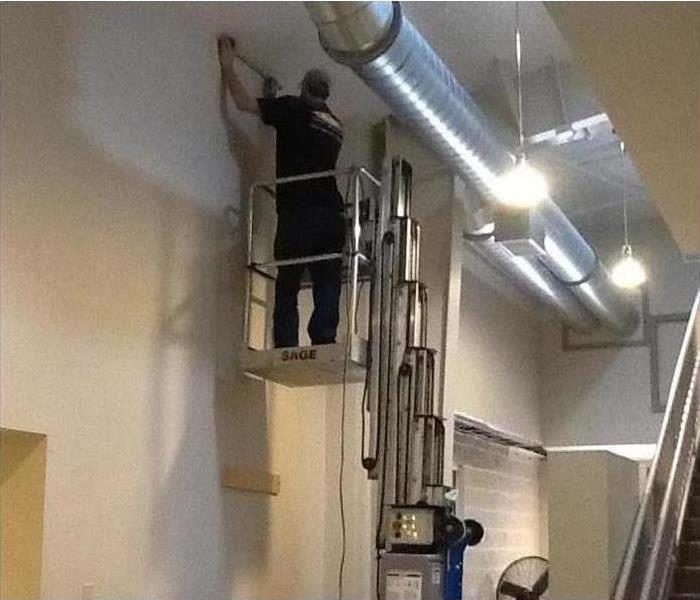 SERVPRO of Western Lancaster saves local company from hail Storm.
SERVPRO of Western Lancaster saves local company from hail Storm.
Even the best building designs are put to the test by mother nature. This time in the form of hail.
The internal gutter system of a technologies facility in the Mount Joy area became clogged when quarter sized hail rained down as violent thunderstorms devastated the area overnight on March 1st. Storms so severe it appeared that a tornado had touch down in the Susquehanna Valley.
With a mixture of ingenuity, and professional know how; our technicians assessed the damage that resulted from the overflow of rain water throughout the facility, and quickly took action.
With minor disturbance on the office staff, and shop employees, the Mount Joy based technologies company was able to remain open, and in full swing of operations. A valuable asset to any company is knowing that though the situation seems bleak, it's no match for the professional training SERVPRO technicians have.
Till next time Mother Nature, as SERVPRO Lancaster West stands strong for the community.
When Storms or Floods hit Lancaster County, SERVPRO is ready!
9/3/2019 (Permalink)
SERVPRO of Western Lancaster specializes in storm and flood damage restoration. Our crews are highly trained and we use specialized equipment to restore your property to its pre-storm condition.
Faster Response
Since we are locally owned and operated, we are able to respond quicker with the right resources, which is extremely important. A fast response lessens the damage, limits further damage, and reduces the restoration cost.
Resources to Handle Floods and Storms
When storms hit Lancaster County, we can scale our resources to handle a large storm or flooding disaster. We can access equipment and personnel from a network of 1,650 Franchises across the country and elite Disaster Recovery Teams that are strategically located throughout the United States.
Have Storm or Flood Damage? Call Us Today 717-665-1270
Cold Temps=Cold Pipes
3/8/2019 (Permalink)
Give your pipes a helping hand this winter season.
If your pipes run through a cabinet or vanity open the doors to give your pipes some warmth from the warm temperature of the room. If there is no doors to open, just leave the water trickle from the faucet. The cost of the water running is a LOT lower then the cost of a frozen pipe being repaired.
If you would forget to leave the water trickle or a door open, here is what you can do to thaw the pipe.
Turn off the main shut-off valve. Use warm air from a hair dryer or space heater to melt the water frozen inside the pipe. NEVER leave the space heater unattended. After the pipe is thawed slowly turn the main shut-off back on. When the water is running throw the pipe check for any cracks or leaks which could of been caused by the freezing.
If you have a burst pipe, shut off your water and give us a call! We are here to help!
Our Professionals providing expertise on TV
2/9/2018 (Permalink)
SERVPRO of Western Lancaster County is a trusted leader in the restoration industry, and our highly trained technicians provide 24-hour emergency service. We’re dedicated to responding faster to any size disaster with the training, equipment, and experience to respond to your restoration or cleaning needs.
- 24x7 support
- Faster to Any Size Disaster
- Highly trained professionals
- A Trusted Leader in the Restoration Industry
- Locally Owned and Operated
- Advanced Restoration and Cleaning Equipment
CALL US at 717-665-1270
Storm Damage Cleanup and Restoration
1/25/2018 (Permalink)
Storms occur with little warning and can be especially devastating, so you will need the company that you can trust to rise to the occasion. Regardless of the type of storm, SERVPRO Franchise Professionals can handle any size disaster. During catastrophic storms and major events, our can respond quickly with additional resources.
- Flooding caused by heavy rains
- Hurricanes and tidal surges
- Tornadoes and wind damage
- Ice and Snow storms
Storms and inclement weather can bring wind damage, heavy rain, and flooding that can devastate any business in a matter of minutes. There never a convenient time for flooding or water damage to strike, and storms don't just strike during regular business hours; that is why SERVPRO Franchise Professionals offer 24 hour emergency service 365 days per year.
Every hour spent cleaning up is an hour of lost revenue and productivity. So when an emergency situation arises in your business, give our Professionals a call and they all be there fast with the help you need.
- 24 x 7 Service
- Faster to Any Size Disaster
- Trusted Leader in the Storm and Water Restoration Industry with over 1,700 Franchises
- Highly trained specialists
Steps in Storm Damage Restoration
12/8/2017 (Permalink)
Storm restoration has become a common activity as incidents of storm damage continue to increase. Natural disasters have been on the rise occasioned by human activities that have played a role in promoting climate change. Common natural disasters that ca lead to storm damage include tornadoes damage, hurricane damage, river flooding, ice damming, ice damage and snowstorms. A flooded home often suffers from roof leaks, roof damage, structural damage, and water damages due to flooding and excessive ground water. Professional storm restoration services will help you with home restoration after flooding occurs or your home suffers a wind damage, a hurricane damage, or a ice damage. A flood pump helps you pump out flood water or excess ground water quickly. They will also need to fix frozen pipes that prevents water from flowing out and ice dams that may lead to roof leaks.
Below are the various steps that are involved during professional storm remediation.
i. Make an emergency contact with your service provider
After a flood water or excess ground water hits your home, the first step of water restoration is making an emergence call to your local water restoration company. You should be able to inform the water restoration company of the level of flood water or ground water in your home to enable them prepare sufficiently for the storm remediation. Local storm restoration companies provide their services on a 24/7 basis and you can call their offices at any moment. Roof damages due to storm damage can lead to roof leak and you will need to seek emergency roof repairs.
ii. Ensure that you are safe from any potential risks
Storms comes with various risks that can threaten your safety and you need to take preventive and precautionary measures. The first source of risks in case of a flooding is the power sources in our home or business and you need to ensure that all power sources are switched off immediately. The home restoration company should determine the river flooding levels, amount of flood water, wind damages, ice damage, hail damage, and river flooding levels at the beginning of the storm remediation. A flood pump can be helpful in getting rid of flood water or excess ground water and eliminating the risk of water damage for your households. In case there are broken pipes or frozen pipes, they will need repairing in addition to fixing any roof leaks.
iii. You should document evidence of storm damage.
You must document evidence of water damage, ice damage, hail damage, wind damage, and roof damage. Documentation of evidence is important, as it is important for insurance claim forms filling. In case you used a flood pump to get rid of water, you can take photographs, record videos, and record any relevant audios. Ice dams can lead to ice damming and this can lead to frozen pipes that are beneficial as they can cut water supply.
iv. Notify your insurance agent of the storm damages.
After you have done documentation of storm damages, you should notify your insurance agent so that they can initiate the process of compensation. In case the insurance company needs to carry out an inspection, they can do it as soon as possible when the state of your damaged property is still intact.
v. You can seek Federal Disaster Assistance when in need of extensive storm remediation.
The federal governments has an elaborate program to help those affected by river flooding, wind damage and other forms of natural disasters. The federal government provides subsidized loans to allow victims restore their homes by paying for minor services for roof repairs and water restoration. This makes it easy for you to cope with ice damming, flooding, hurricane damage, and hail damage.
vi. Management of ice dams, wind damage, hurricane damage, hail damage, and roof damage
Home restoration after a flood will involve minor ad major repairs such as window and door repairs, household replacement, restoration of water and electric supply, and checking for ice dams. A home restoration process should begin as soon as possible to minimize damages from hail damage and potential roof repairs. You should ensure that frozen pipes due to ice damming and frozen dams are heated up to restore water supply. In storm restoration, dehumidifiers are used to absorb water moisture and water suckers to allow the restoration personnel to pump water out using flood pumps. A roof repair is also important in fixing minor roof leaks.
 Every year, homeowners experience damage from storm-related pipes bursting, roof leaks, etc. Call SERVPRO of Western Lancaster; we're here to help!
Every year, homeowners experience damage from storm-related pipes bursting, roof leaks, etc. Call SERVPRO of Western Lancaster; we're here to help!





 24/7 Emergency Service
24/7 Emergency Service







